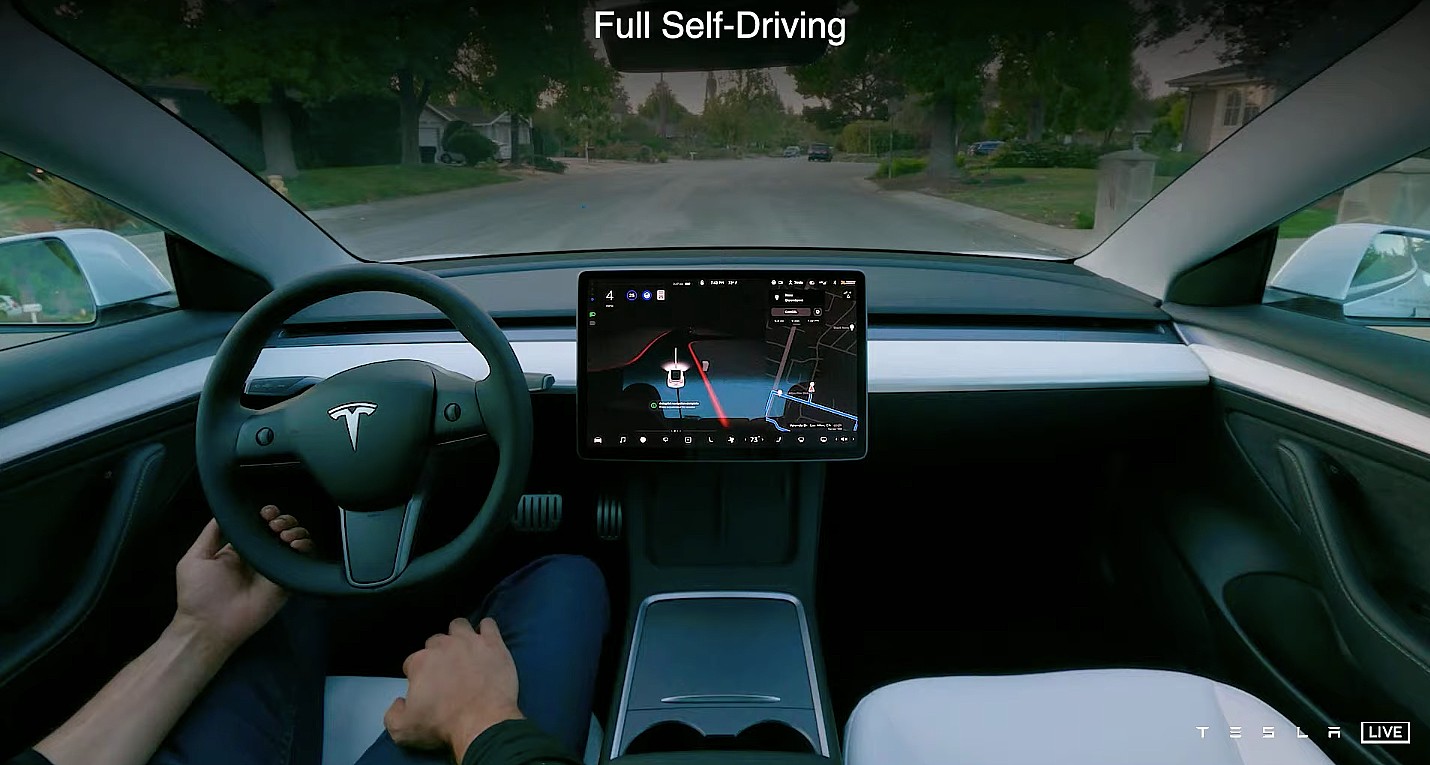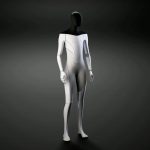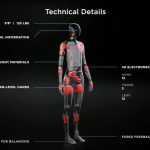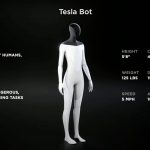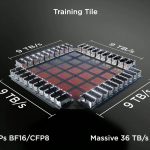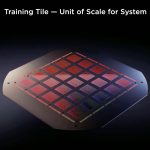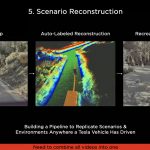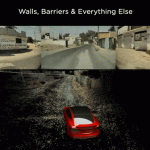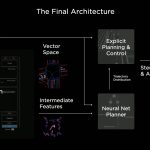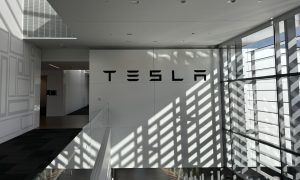Tesla’s AI Day is here. In a few minutes, Tesla watchers would be seeing executives like Elon Musk provide an in-depth discussion on the company’s AI efforts on not just its automotive business but on its energy business and beyond as well. AI Day promises to be yet another tour-de-force of technical information from the electric car manufacturer. Thus, it is no surprise that there is a lot of excitement from the EV community heading into the event.
Tesla has kept the details of AI Day behind closed doors, so the specifics of the actual event are scarce. That being said, an AI Day agenda sent to attendees indicated that they could expect to hear Elon Musk speak during a live keynote, speak with Andrej Karpathy and the rest of Tesla’s AI engineers, and participate in breakout sessions with the teams behind Tesla’s AI development.
Similar to Autonomy Day and Battery Day, Teslarati would be following along on AI Day’s discussions to provide you with an updated account of the highly-anticipated event. Please refresh this page from time to time, as notes, details, and quotes from Elon Musk’s keynote and its following discussions will be posted here.
Simon 19:40 PT – A question about the use cases for the Tesla Bot was asked. Musk notes that the Tesla Bot would start with boring, repetitive, work, or work that people would least like to do.
Simon 19:25 PT – A question about AI and manufacturing is asked and how it potentially relates to the “Alien Dreadnaught” concept. Musk notes that most of Tesla’s manufacturing today is already automated. Musk also noted that humanoid robots would be done either way, so it would be great for Tesla to do this project, and safely as well. “We’re making the pieces that would be useful for a humanoid robot, so we should probably make it. If we don’t someone else will — and we want to make sure it’s safe,” Musk said.
Simon 19:15 PT – And the Q&A starts. First question involves open-sourcing Tesla’s innovations. Musk notes that it’s pretty expensive to develop all this tech, so he’s not sure how things could be open-sourced. But if other car companies would like to license the system, that could be done.
Simon 19:11 PT – There will really be a “Tesla Bot.” It would be built by humans, for humans. It would be friendly, and it would eliminate dangerous, repetitive, boring tasks. This is still petty darn unreal. It uses the systems that are currently being developed for the company’s vehicles. “There will be profound applications for the economy,” Musk said.
Simon 19:06 PT – New products! A whole Tesla suit?! After a fun skit, Elon says the “Tesla Bot” would eventually be real.
Simon 19:00 PT – What is crazy is that Dojo is not even done. This is just what it is today. Dojo is still evolving, and it is going to be way more powerful in the future. Now, it’s Elon Musk’s turn. What’s next for Tesla beyond vehicles.
Simon 19:00 PT – Venkataramanan teases the ExaPOD. Yet another revolutionary solution from Tesla. With all this, it is evident that Tesla’s approach to autonomy is on a whole other level. It would not be surprising if it takes Wall Street and the market a few days to fully absorb what is happening here.
Simon 18:55 PT – The specs of Dojo are insane. Behind its beastly specs, it seems that Dojo’s full potential lies in the fact that all this power is being used to do one thing: to make autonomous cars possible. Dojo is a pure learning machine, with more than 500,000 training nodes being built together. Nine petaflops of compute per tile, 36 terabytes per second of off-tile bandwidth. But this is just the tip of the iceberg for Dojo.
Simon 18:50 PT – Ganesh Venkataramanan, Project Dojo’s lead, takes the stage. He states that Elon Musk wanted a super-fast training computer to train Autopilot. And thus Project Dojo was born. Dojo is a distributed compute architecture connected by network fabric. It also has a large compute plane, extremely high bandwidth with low latencies, and big networks that are partitioned and mapped, to name a few.

Simon 18:45 PT – Milan Kovac, Tesla’s Director of Autopilot Engineering takes the stage. He notes that he would discuss how neural networks are run in the company’s cars. He notes that Tesla’s systems require supercomputers.
Simon 18:40 PT – Ashok notes that simulations have helped Tesla a lot already. It has, for example, helped the company identify pedestrian, bicycle, and vehicle detection and kinematics. The networks in the vehicles were traded to 371 million simulated images and 480 million cuboids.
Simon 18:35 PT – Ashok notes that these strategies ultimately helped Tesla retire radar from its FSD and Autopilot suite and adopt a pure vision model. A comparison between a radar+camera system and pure vision shows just how much more refined the company’s current strategy is. The executive also touched on how simulations help Tesla develop its self-driving systems. He states that simulations help when data is difficult to source, difficult to label, or in a closed loop.
Simon 18:30 PT – Ashok returns to discuss Auto Labeling. Simply put, there is so much labeling that needs to be done that it’s impossible to be done manually. He shows how roads and other items on the road are “reconstructed” from a single car that’s driving. This effectively allowed Tesla to label data much faster, while allowing vehicles to navigate safely and accurately even when occlusions are present.
Simon 18:25 PT – Karpathy returns to talk about manual labeling. He notes that manual labeling that’s outsourced to third-party firms is not optimal. Thus, in the spirit of vertical integration, Tesla opted to establish its own labeling team. Karpathy notes that in the beginning, that Tesla was using 2D image labeling. Eventually, Tesla transitioned to 4D labeling, where the company could label in vector space. But even this was not enough, and thus, auto labeling was developed.
Simon 18:23 PT – The executive states that traffic behavior is extremely complicated, especially in several parts of the world. Ashok notes that this partly illustrated by parking lots and how they are actually complex. Summoning a car from a parking lot, for example, used to utilize 400k notes to navigate, resulting in a system whose performance left much to be desired.
Simon 18:18 PT – Ashok notes that when driving alongside other cars, Autopilot must not only think about how they would drive, they must also think about how other cars would operate. He shows a video of a Tesla navigating a road and dealing with multiple vehicles to demonstrate this point.
Simon 18:15 PT – Director of Autopilot Software Ashok Elluswamy takes the stage. He starts off by discussing some key problems in planning in both non-convex and high-dimensional action spaces. He also shows Tesla’s solution to these issues, a “Hybrid Planning System.” He demonstrates this by showing how Autopilot performs a lane change.
Simon 18:10 PT – Karpathy’s discussion notes that today, Tesla’s FSD strategy is a lot more cohesive. This is demonstrated by the fact that the company’s vehicles could effectively draw a map in real-time as it drives. This is a massive difference compared to the pre-mapped strategies employed by rivals in both the automotive and software field like Super Cruise and Waymo.
To solve several problems encountered over the last few years with the previous suite, Tesla re-engineered their NN learning from the ground up and utilized a multi-head route, camera calibrations, caching, queues, and optimizations to streamline all tasks.
(heavily simplified) pic.twitter.com/LG2TRgjxip
— Teslascope (@teslascope) August 20, 2021
Simon 18:05 PT – The AI Director discusses how Tesla practically re-engineered their neural network learning from the ground-up and utilized a multi-head route. These include camera calibrations, caching, queues, and optimizations to streamline all tasks. Do note that this is an extremely simplified iteration of Karpathy’s discussion so far.
Simon 18:00 PT – Karpathy covers more challenges that are involved in even the basics of perception. Needless to say, AI Day is quickly proving to be Tesla’s most technical event right off the bat. That said, multi-camera networks are amazing. They’re just a ton of work, but it may very well be a silver bullet for Tesla’s predictive efforts.
Simon 17:56 PT – Karpathy showcases a video of how Tesla used to process its image data in the past. He shows a popular video for FSD that has been shared in the past. He notes that while great, such a system proved to be inadequate, and this is something that Tesla learned when it launched Smart Summon. While per-camera detection is great, the vector space proves inadequate.
Simon 17:55 PT – Karpathy noted that when Tesla designs the visual cortex in its car, the company is modeling it to how a biological vision is perceived by eyes. He also touches on how Tesla’s visual processing strategies have evolved over the years, and how it is done today. The AI Director also touches on Tesla’s “HydraNets,” on account of their multi-task learning capabilities.
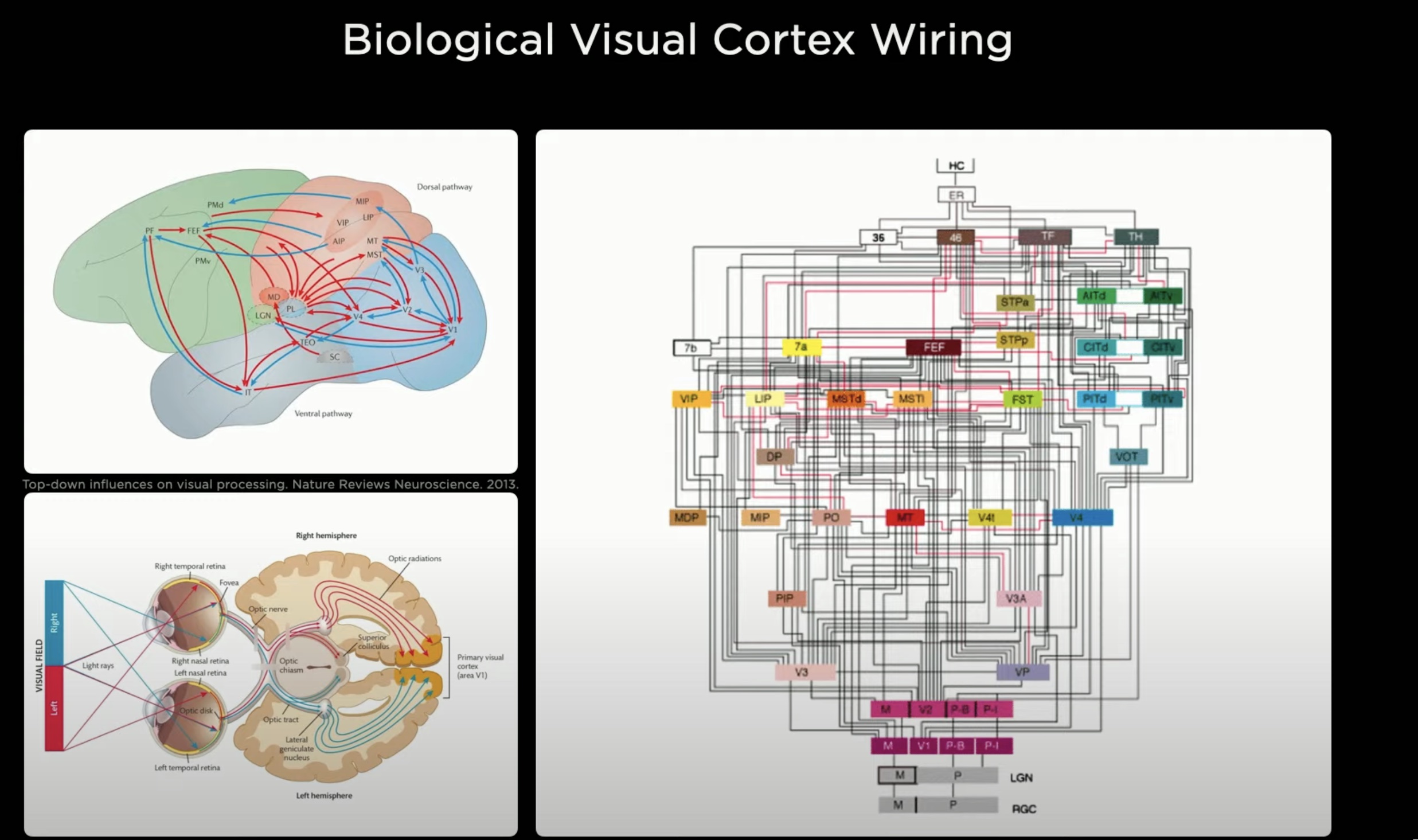
Simon 17:51 PT – Karpathy starts off by discussing the visual component of Tesla’s AI, as characterized by the eight cameras used in the company’s vehicles. The AI director notes that AI could be considered like a biological being, and it’s built from the ground up, including its synthetic visual cortex.
Simon 17:48 PT – Elon Musk takes the stage. He apologizes for the event’s delay. He jokes that Tesla probably needs AI to solve these “technical difficulties.” The CEO highlights that AI Day is a recruitment event. He calls Tesla’s head of AI Andrej Karpathy. There’s no better person to discuss AI.
Simon 17:45 PT – We’re here watching the AI Day FSD preview video and we can’t help but notice that… are those Waypoints?!
Simon 17:38 PT – Looks like we’ve got an Elon sighting! And a preview video too! Here we go, folks!
We’ve got an Elon sighting
— Rob Maurer (@TeslaPodcast) August 20, 2021
Simon 17:30 PT – A 30-minute delay. We haven’t seen this much delay in quite a bit.
Simon 17:20 PT – It’s a good thing that Tesla has great taste in music. Did Grimes mix this track?
Simon 17:15 PT – We’re 15 minutes in. “Elon Time” is going strong on AI Day. To be honest, though, this music would fit the “Rave Cave” in Giga Berlin this coming October.
Simon 17:10 PT – A good thing to keep in mind is that AI Day is a recruitment event. Some food for thought just in case the discussions take a turn for the extremely technical. AI Day is designed to attract individuals who speak Tesla’s language in its rawest form. We’re just fortunate enough to come along for the ride.
Tesla Board Member Hiro Mizuno sums it up in this tweet pretty well.
Anybody passionate about real world AI !! https://t.co/ydaWQlkE4O
— HIRO MIZUNO (@hiromichimizuno) August 20, 2021
Simon 17:05 PT – I guess AI Day is starting on “Elon Time?” We’re on to the next track of chill music.
Simon 17:00 PT – And with 5 p.m. PST here, the music is officially live on the AI Day live stream. Looks like we’re in for some wait. Wonder how many minutes it would take before it starts? Gotta love this chill music though.
Simon 16:58 PT – While waiting, I can’t help but think that a ton of TSLA bears and Wall Street would likely not understand the nuances of what Tesla would be discussing today. Will Tesla go three-for-three? It was certainly the case with Battery Day and Autonomy Day.
Made it pic.twitter.com/aAWqxgf0bP
— Johnna (@JohnnaCrider1) August 19, 2021
Simon 16:55 PT – T-minus 5 minutes. Some attendees of AI Day are now posting some photos on Twitter, but it seems like photos and videos are not allowed on the actual venue of the event. Pretty much expected, I guess.
Simon 16:50 PT – Greetings, everyone, and welcome to another Live Blog. This is Tesla’s most technical event yet, so I expect this one to go extremely in-depth on the company’s AI efforts and the technology behind it. We’re pretty excited.
Don’t hesitate to contact us with news tips. Just send a message to tips@teslarati.com to give us a heads up.
News
Tesla begins Robotaxi certification push in Arizona: report
Tesla seems serious about expanding its Robotaxi service to several states in the coming months.

Tesla has initiated discussions with Arizona transportation regulators to certify its driverless Robotaxi service in the state, as per a recent report from Bloomberg News. The move follows Tesla’s launch of its Robotaxi pilot program in Austin, Texas, as well as CEO Elon Musk’s recent comments about the service’s expansion in the Bay Area.
The Arizona Department of Transportation confirmed to Bloomberg that Tesla has reached out to begin the certification process for autonomous ride-sharing operations in the state. While details remain limited, the outreach suggests that Tesla is serious about expanding its driverless Robotaxi service to several territories in the coming months.
The Arizona development comes as Tesla prepares to expand its service area in Austin this weekend, as per CEO Elon Musk in a post on X. Musk also stated that Tesla is targeting the San Francisco Bay Area as its next major market, with a potential launch “in a month or two,” pending regulatory approvals.
Tesla first launched its autonomous ride-hailing program on June 22 in Austin with a small fleet of Model Y vehicles, accompanied by a Tesla employee in the passenger seat to monitor safety. While still classified as a test, Musk has said the program will expand to about 1,000 vehicles in the coming months. Tesla will later upgrade its Robotaxi fleet with the Cyercab, a two-seater that is designed without a steering wheel.
Sightings of Cybercab castings around the Giga Texas complex suggests that Tesla may be ramping the initial trial production of the self-driving two-seater. Tesla, for its part, has noted in the past that volume production of the Cybercab is expected to start sometime next year.
In California, Tesla has already applied for a transportation charter-party carrier permit from the state’s Public Utilities Commission. The company is reportedly taking a phased approach to operating in California, with the Robotaxi service starting with pre-arranged rides for employees in vehicles with safety drivers.
News
Tesla sets November 6 date for 2025 Annual Shareholder Meeting
The automaker announced the date on Thursday in a Form 8-K.

Tesla has scheduled its 2025 annual shareholder meeting for November 6, addressing investor concerns that the company was nearing a legal deadline to hold the event.
The automaker announced the date on Thursday in a Form 8-K submitted to the United States Securities and Exchange Commission (SEC). The company also listed a new proposal submission deadline of July 31 for items to be included in the proxy statement.
Tesla’s announcement followed calls from a group of 27 shareholders, including the leaders of large public pension funds, which urged Tesla’s board to formally set the meeting date, as noted in a report from The Wall Street Journal.
The group noted that under Texas law, where Tesla is now incorporated, companies must hold annual meetings within 13 months of the last one if requested by shareholders. Tesla’s previous annual shareholder meeting was held on June 13, 2024, which placed the July 13 deadline in focus.
Tesla originally stated in its 2024 annual report that it would file its proxy statement by the end of April. However, an amended filing on April 30 indicated that the Board of Directors had not yet finalized a meeting date, at least at the time.
The April filing also confirmed that Tesla’s board had formed a special committee to evaluate certain matters related to CEO Elon Musk’s compensation plan. Musk’s CEO performance award remains at the center of a lengthy legal dispute in Delaware, Tesla’s former state of incorporation.
Due to the aftermath of Musk’s legal dispute about his compensation plan in Delaware, he has not been paid for his work at Tesla for several years. Musk, for his part, has noted that he is more concerned about his voting stake in Tesla than his actual salary.
At last year’s annual meeting, TSLA shareholders voted to reapprove Elon Musk’s compensation plan and ratified Tesla’s decision to relocate its legal domicile from Delaware to Texas.
Elon Musk
Grok coming to Tesla vehicles next week “at the latest:” Elon Musk
Grok’s rollout to Tesla vehicles is expected to begin next week at the latest.

Elon Musk announced on Thursday that Grok, the large language model developed by his startup xAI, will soon be available in Tesla vehicles. Grok’s rollout to Tesla vehicles is expected to begin next week at the latest, further deepening the ties between the two Elon Musk-led companies.
Tesla–xAI synergy
Musk confirmed the news on X shortly after livestreaming the release of Grok 4, xAI’s latest large language model. “Grok is coming to Tesla vehicles very soon. Next week at the latest,” Musk wrote in a post on social media platform X.
During the livestream, Musk and several members of the xAI team highlighted several upgrades to Grok 4’s voice capabilities and performance metrics, positioning the LLM as competitive with top-tier models from OpenAI and Google.
The in-vehicle integration of Grok marks a new chapter in Tesla’s AI development. While Tesla has long relied on in-house systems for autonomous driving and energy optimization, Grok’s integration would introduce conversational AI directly into its vehicles’ user experience. This integration could potentially improve customer interaction inside Tesla vehicles.
xAI and Tesla’s collaborative footprint
Grok’s upcoming rollout to Tesla vehicles adds to a growing business relationship between Tesla and xAI. Earlier this year, Tesla disclosed that it generated $198.3 million in revenue from commercial, consulting, and support agreements with xAI, as noted in a report from Bloomberg News. A large portion of that amount, however, came from the sale of Megapack energy storage systems to the artificial intelligence startup.
In July 2023, Musk polled X users about whether Tesla should invest $5 billion in xAI. While no formal investment has been made so far, 68% of poll participants voted yes, and Musk has since stated that the idea would be discussed with Tesla’s board.
-

 Elon Musk1 week ago
Elon Musk1 week agoTesla investors will be shocked by Jim Cramer’s latest assessment
-

 Elon Musk3 days ago
Elon Musk3 days agoElon Musk confirms Grok 4 launch on July 9 with livestream event
-

 Elon Musk13 hours ago
Elon Musk13 hours agoxAI launches Grok 4 with new $300/month SuperGrok Heavy subscription
-

 News7 days ago
News7 days agoTesla Model 3 ranks as the safest new car in Europe for 2025, per Euro NCAP tests
-

 Elon Musk2 weeks ago
Elon Musk2 weeks agoA Tesla just delivered itself to a customer autonomously, Elon Musk confirms
-

 Elon Musk1 week ago
Elon Musk1 week agoxAI’s Memphis data center receives air permit despite community criticism
-
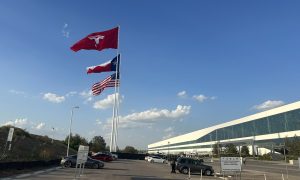
 Elon Musk2 weeks ago
Elon Musk2 weeks agoTesla’s Omead Afshar, known as Elon Musk’s right-hand man, leaves company: reports
-

 News2 weeks ago
News2 weeks agoXiaomi CEO congratulates Tesla on first FSD delivery: “We have to continue learning!”

